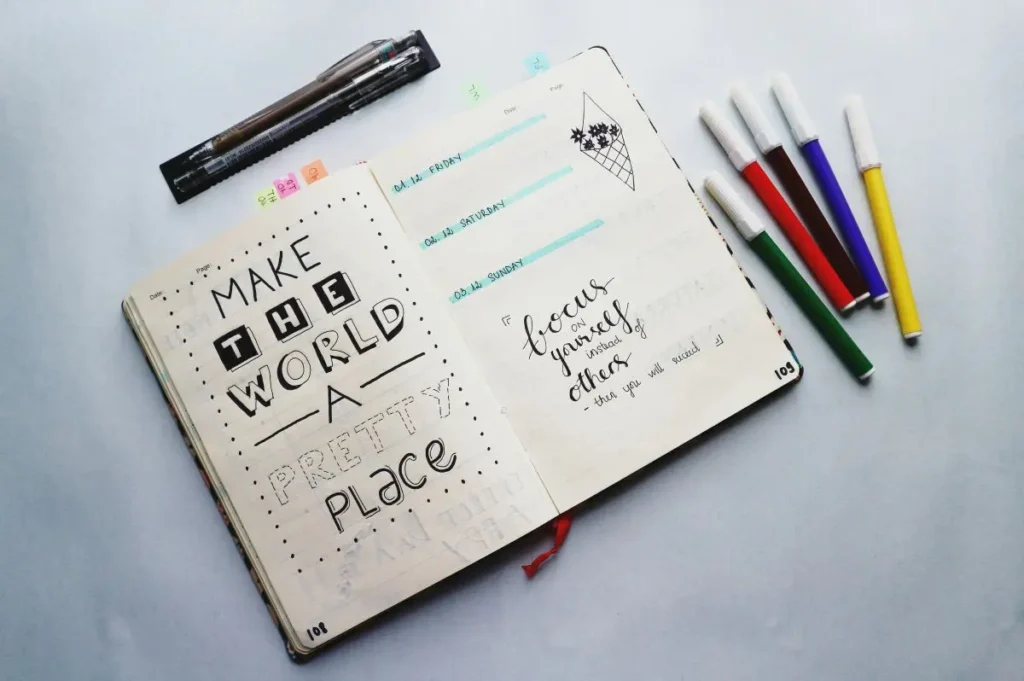9 Best Ways to Organize a To-Do List for Work
If you’re serious about overcoming overwhelm at work, the best way to organize a to-do list for work can completely change how your day feels. When your to-do list feels less like a helper and more like a source of stress, you’re not alone. An overflowing, unorganized list doesn’t just make you busy—it makes you feel paralyzed.
The truth? Most people searching for this aren’t hobby planners. You’re here because you need real relief: a calmer way to get through your tasks without drowning in them.
The below best ways to organize a to-do list for work are practical, clear, and designed to give you peace of mind—not just productivity.
Why To-Do Lists at Work Feel Overwhelming and Cause Anxiety
When your list is a mile long and scattered with half-finished thoughts, your brain interprets it as chaos. Instead of focus, you feel anxiety and overwhelmed by your to-do list.
This happens because:
- Too many tasks create cognitive overload.
- Vague items (like “work on project”) increase stress.
- A list that grows without organization feels impossible to finish.
But there’s good news: when you bring order and intention to your list, you create calm, clarity, and control.
The Brain Science of Overwhelm (and Why Lists Help)
As someone with a background in brain-based education, I can tell you this: overwhelm isn’t just a feeling—it’s a neurological response.
Here’s what happens:
- Your prefrontal cortex (the part of your brain that manages decision-making) gets overloaded when too many tasks compete for attention.
- This overload triggers your amygdala (the stress center), which can make you feel anxious, stuck, or reactive.
- Writing down and organizing tasks gives your brain a “download” — moving them out of working memory and reducing cognitive strain.
In short: when you organize your to-do list, you’re not just being practical—you’re literally rewiring your brain to feel calmer and more focused.
Quick Relief: What to Do Right Now If You’re Overwhelmed
Before we get into the 9 strategies, here’s a three-step reset you can use today if your list is already overwhelming:
- Brain-dump everything onto a page—no editing, just unload your mind.
- Circle one important task that will move things forward today.
- Cross out, postpone, or delegate the rest for now.
👉 You don’t have to finish it all. You just need to move forward with one small, doable step.

Best Ways to Organize a To-Do List for Work
1. Brain-Dump Everything First
Your brain can’t organize what it’s still holding onto. Start with a messy dump, then clean it up.
Example: Instead of keeping “emails” in your head, write down “Reply to HR email, confirm meeting time, send report.” Read more here about how brain dumping can reduce stress.
2. Break Big Tasks Into Smaller Steps
Large, vague tasks create stress. Specific, actionable steps create clarity.
Before: “Finish report.”
After: “1) Draft outline, 2) Add charts, 3) Proofread.”
3. Prioritize 3 Must-Dos Per Day
Your list doesn’t need to be endless. Choose three “non-negotiables” and let the rest be flexible.
This keeps your list realistic and gives you a sense of accomplishment.
4. Use Categories or Buckets
Instead of one long stream of tasks, group them.
Categories to try: Meetings, Creative Work, Admin, Email. Phone calls.
Your brain loves patterns—it instantly feels calmer.
5. Batch Similar Tasks Together
Switching between totally different types of tasks drains energy. Batch them instead.
Example: Check all emails at once instead of every 10 minutes.
6. Match Tasks With Time Blocks
Pair your list with your schedule. Give big tasks a block of time and small tasks short slots.
This makes your list feel doable instead of endless.
7. Add Energy Levels to Your List
Not all tasks require the same brainpower. Label them High, Medium, or Low energy.
Do your most creative work when you’re fresh; save the easy stuff for later.
8. Review and Reset Each Afternoon
End your day by checking off what you finished and resetting for tomorrow.
This prevents “list creep” where unfinished tasks pile up endlessly.
9. Keep It Emotionally Light
Cross off tasks with joy. Celebrate small wins. Your list should feel like support—not a punishment or never-ending judgment.
Digital vs. Paper: Which Helps You Stay Calm?
Some people feel peace writing things down by hand. Others like the flexibility of digital tools. Neither is wrong—the best method is the one that feels calming for you. Check out these related posts:
“Overwhelm paralysis happens when your list feels too big to even start—breaking tasks into steps is the way out.”
How to Keep Your To-Do List Emotionally Light
Organization isn’t about cramming in more—it’s about creating space to think clearly and move forward with ease. By organizing your list in the above ways, you’re not just managing tasks—you’re overcoming overwhelm and creating clarity. Keep your lists short, structured, and realistic, and remember: progress matters more than perfection.
Everyday Joy Takeaway
Your work to-do list doesn’t have to cause anxiety and you don’t have to be overwhelmed by your to-do list! When your list is clear, you move past overwhelm paralysis and into calm, confident action. Here’s to finding calm, clarity, and maybe even joy in getting things done. 😉





